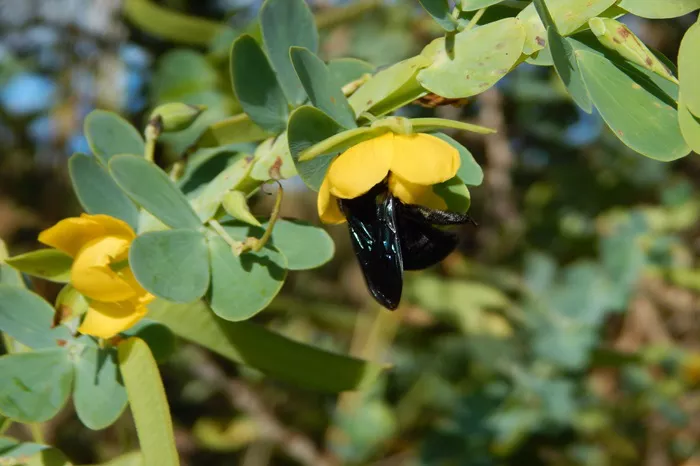A recent study published in the American Journal of Botany reveals that soil bacteria, which aid in nitrogen fixation, can significantly boost the reproductive success of certain plants. The research focuses on Chamaecrista latistipula, a legume from the Fabaceae family, which includes beans and peas.
Soil bacteria improve plant reproduction by enhancing the attractiveness of flowers to pollinators through a mutualistic relationship. In this type of interaction, both plants and microorganisms, such as bacteria or fungi, benefit. Plants receive nutrients, while microorganisms gain essential resources.
For C. latistipula, a shrub native to Bolivia, Brazil, and northeastern Argentina, the soil is often nutrient-poor. This plant relies on specific pollinators to reproduce.
Anselmo Nogueira, a professor at the Federal University of the ABC’s Center for Natural and Human Sciences in São Bernardo do Campo, São Paulo, explains, “The plant’s relationship with nitrogen-fixing bacteria boosts nutrient supply to its roots in exchange for the sugars bacteria need.”
The plant also relies on a particular type of pollinator. Its flowers release pollen only when vibrated by female bumblebees from the genus Bombus.
A greenhouse study conducted at Nogueira’s Plant-Animal Interaction Laboratory demonstrated that bacteria play a crucial role in making flowers attractive to bumblebees, especially in nutrient-poor soil.
Caroline Souza, the study’s lead author, noted, “We found an unexpected result. We assumed plants would thrive in nitrogen-rich soil without bacteria. However, plants in nutrient-rich soil didn’t produce attractive flowers.”
The research was part of a project titled “Synergistic Effect of Multiple Mutualists on Plants,” led by Nogueira.
Experiment Details
The experiment involved growing 60 C. latistipula plants for 16 months. Half were planted in sandy soil with minimal nutrients, and the other half in nutrient-rich soil enhanced with potassium nitrate.
Before planting, seeds were sterilized to remove any bacteria and the soil was autoclaved to kill microorganisms. The two types of soil were then treated differently. Rhizobia, nitrogen-fixing bacteria isolated from wild C. latistipula, were added to half of the pots in each soil type.
Plants in nitrogen-poor sandy soil with added rhizobia grew significantly better than those without bacteria or in nutrient-rich soil. According to Nogueira, “Plants with rhizobia in sandy soil were nearly twice as tall and three times larger than those in nutrient-rich soil with rhizobia.”
Flower and Root Analysis
The researchers used a surface spectrophotometer to measure flower reflectance and assess color contrast visible to bumblebees. Significant differences were observed only in plants grown in nitrogen-poor sandy soil with rhizobia, which showed patterns attractive to bumblebees.
Souza explained, “The anthers, containing pollen, are accessed only by insects that can vibrate them. Exotic bees like the European honeybee cannot do this.”
Pollen is a crucial protein source for bee larvae, influencing their growth and development.
After the flowers were analyzed, the plants were removed to inspect their roots. The number of root nodules, indicating interaction with rhizobia, was recorded. Nodules are structures where nitrogen-fixing bacteria reside, helping plants produce necessary amino acids.
Nogueira concluded, “We aim to determine if the pollen, accessible only to native bees, is richer in proteins and amino acids due to the bacteria-plant partnership. The enhanced flower attractiveness may be linked to the higher quality resources provided by the plant’s increased nitrogen fixation.”
Related topics:
- 4 Essential Steps to Take After Growing Your First Outdoor Pot Plant
- How to Control Invasive Plants and Protect Local Ecosystems
- 5 Flowers to Plant in October for a Stunning Winter Display


